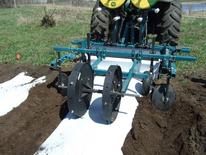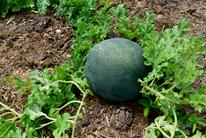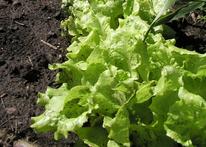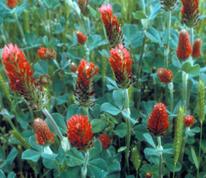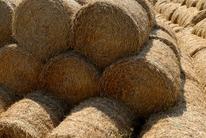By Jennifer Nelson
Edited by Kristine Moncada, Gigi DiGiacomo, Craig Sheaffer and Nicole Tautges
Farmers Shannon and Micah Andersen* have been farming for four years and purchased just over 150 acres from a third-generation dairy farm two years ago. Micah holds a Bachelor’s degree in sustainable agriculture and gained experience working on a variety of different farms – mostly small, diversified, family farms as well as a school garden and a farm non-profit. Micah and Shannon decided to certify their land for organic production because they deeply valued sustainability and working with nature’s patterns.
In the farm partnership with Shannon, Micah takes the lead in growing the produce and fixing the machinery when it breaks down. Shannon is the farm shepherd, as well as the business marketer, writer, and photographer. She loves learning about and meeting the biological and psychological needs of her flock. When she’s not in lambing season or moving portable fencing, Shannon is in the fields working with Micah on the vegetables.
Micah and Shannon were able to obtain organic certification of their vegetable operation almost immediately on some fields of the land they had bought. On these fields, they grew vegetables like salad greens, radishes, cucumbers, and squash, as well as fruit like melons and cantaloupe. Their mission is to improve the land and maintain the homestead’s infrastructure, while providing the local community with high-quality farm products.
After first purchasing the farm, Micah and Shannon worked on building and balancing the soil in fields that had been fallow. Weeds, however, were persistent, having had many years to establish. Yellow foxtail, a grass, was their biggest problem. The yellow foxtail on their farm was producing a seed head when the grass was approximately two inches tall, so the tractor-towed brush hog mower that cuts three inches at its lowest setting couldn’t reach the grass before it became a reproducing seed head. The foxtail continued to multiply, threatening the health of their vegetable crops by taking nutrients from the soil, shading out the sun and providing habitat for potentially harmful insects.
Shannon and Micah tried a number of weed control methods, but as they increased their production acreage each year, they were running out of weed control options. As they scaled up production to five acres, using many of the same soil preparation techniques and equipment, Shannon and Micah simply didn’t have time to hand weed their expanded acreage. It was only the two of them with one very part-time employee, and they didn’t have the income to pay for the labor of another employee.
Organic Control Options for Large Acreages
Shannon and Micah started exploring their options. The first method they used was tried and true: cultivation and hand weeding. The first few years when they were farming two acres or less, Shannon and Micah were able to keep up with their weeds by using cultivation and hand-weeding on a schedule. For example, in spring they would prepare the soil bed with a borrowed tractor, plowing to break up overwintered cover crops. The residue would break down after a week or two, after which they would add compost. After allowing the germination of a few more weed seeds, they would use the wheel hoe to break up the soil and get rid of the small weeds. They would then direct seed lettuce salad mix. They would hand weed once more when the salad mix had germinated and was about two inches tall. This routine usually allowed them to make it to harvest with no more hand weeding, as they had gotten rid of most of the weed seeds before planting.
Longer season crops such as kale that are planted in spring, stay in the ground and are harvested all season. Shannon and Micah could prepare the beds similarly for these crops, and then hand weed at least three times during the season to keep the weeds at bay. The second method they tried was to crowd out unwanted weeds using long-season rotations with relay cropping, a technique where multiple crops are grown on the same ground in one year.
They also experimented with under-seeding a cover crop with vegetables to provide additional crop competition with weeds. For example, under and in between the kale plants, they would seed a cover crop like crimson clover to crowd out the other weeds. This technique required favorable weather and perfect timing – two things that a small farm team doesn’t often have. Crimson clover can build up soil organic matter and fix nitrogen so it’s available for crops to use, but it takes a while to establish, and so is not an ideal weed suppression cover crop. Cover crop seed is also generally expensive, and while a valued luxury used in resting fields to build soil, it is an expensive weed control method to use in existing crop rows.
Thirdly, Shannon and Micah discussed buying a small cultivating tractor to use for weed control. They had purchased a larger tractor for plowing and baling hay, but didn’t have a smaller model that could easily get between the rows to inter-row cultivate. With all of the other expenses that come with small diversified vegetable farming, the expense of a cultivating tractor had not yet fit into the budget. It would save them a lot of labor time currently used for hand weeding, but the expense hadn’t been feasible.
Is Plastic the Only Option?
Shannon and Micah started feeling that plastic mulch might be their only option. Many small diversified certified organic vegetable farmers consider plastic the best weed control option, despite the uneasiness that comes with using a petroleum product that will go into a landfill every year. Plastic mulches effectively block weed emergence, and promote soil warming and early crop growth. It’s also easy to use drip irrigation underneath the mulch, and control efficient watering through drip tape. However, organic regulation requires farmers to pull up the mulch at the end of the season. The mulch can’t be used again or recycled so it is thrown away every year.
However, reliance on mulches rather than cultivation may be better for soil quality in the long term. Intensive cultivation of soil, like the repeated cultivation often used every year to control weeds on organic farms, is known to break up soil aggregates and reduce fungal and earthworm numbers in soils. As fungi and earthworms contribute to soil quality by improving soil structure and tilth, important for water infiltration and holding capacity and nutrient cycling, repeated cultivation can lead to soil degradation in the long term. The financial and ecological cost of plastic mulch could be outweighed by the damaging effects of cultivation year in and year out on their farm.
Biodegradable mulch is available, but its development is very much a work in progress. Even the newest products that claim to be biodegradable break down very slowly and oftentimes not completely. Plastic mulch is also expensive, at approximately $250 per acre, and almost double that for biodegradable mulch.
Instead, Shannon and Micah were using natural mulches like straw from their forage fields. They had a mostly good experience with this method, and used it primarily in between rows and only on transplanted crops, rather than those that were direct-seeded. The problem with this was keeping up with production; they chose to use their own hay, and were not able to produce enough to feed their sheep over winter as well as using hay in the vegetable fields as mulch. They also found that it had to be laid down very thickly to prevent the foxtail from finding its way through the straw, and the whole process took a lot of time.
Micah and Shannon knew they could not continue to rely on hand weeding to keep weeds at bay in their vegetable crops. However, they did not have to capital to invest in machinery to perform weed control cultivation operations more quickly. They felt that they had to choose between petroleum plastic, biodegradable plastic, or straw mulch. Each of the mulch options have their pros and cons, including expense, labor and negative environmental impact. Should Shannon and Micah use plastic mulch in their fields this year? What weed control plan could they adopt for the long term? What combination of these weed control methods could work within Shannon and Micah’s small farm business?
* While these cases describe actual situations, names have been changed to protect the identity of participants.
Access the complete decision case study with all educational materials (pdf) >>>
You may cite this publication as:
Nelson, J. 2017. Managing Weeds Organically: Do We Have to Use Plastic? A Decision Case Study in Principles for Transitioning to Organic Farming: e-Learning Materials and Decision Case Studies for Educators. K. Moncada, G. DiGiacomo, C. Sheaffer, and N. Tautges (Eds). University of Minnesota, St. Paul, MN.
